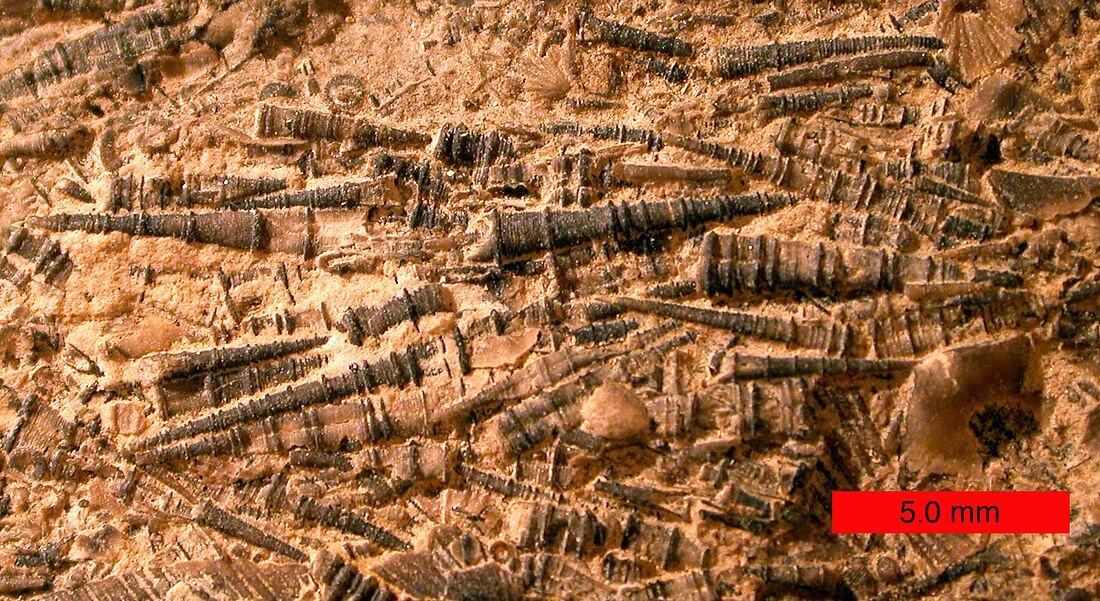Top Qs
Timeline
Chat
Perspective
Tentaculites
Extinct genus of invertebrates From Wikipedia, the free encyclopedia
Remove ads
Tentaculites is an extinct genus of conical fossils of uncertain affinity, class Tentaculita, although it is not the only member of the class. It is known from Lower Ordovician to Upper Devonian deposits[1] both as calcitic shells with a brachiopod-like microstructure[2] and carbonaceous 'linings'.[3][4] The "tentaculites" (i.e. tentaculita) are also referred to as the styliolinids.
Remove ads
Affinity

The taxonomic classification of tentaculitids is uncertain. Some grouped them with pteropods, but there is no modern support and only superficial similarity.[who?][5] They may also be related to other conical shells of uncertain affinity including cornulitids, Anticalyptraea, microconchids and trypanoporids.[6] Their shell microstructure has warranted their comparison with the brachiopods and phoronids,[2][7] and the possible Ediacaran lophophorate Namacalathus.[8]
Remove ads
Morphology


Tentaculitids have ribbed, cone-shaped shells which range in length from 5 to 20 mm. Some species septate; their embryonic shell, which is retained, forms a small, sometimes spherical, chamber.[4]
Ecology
Some species are inferred to have been planktonic.[9]
See also
- Mari Mari Group, fossil formation in the state of Amazonas of northwestern Brazil
References
Further reading
Wikiwand - on
Seamless Wikipedia browsing. On steroids.
Remove ads

